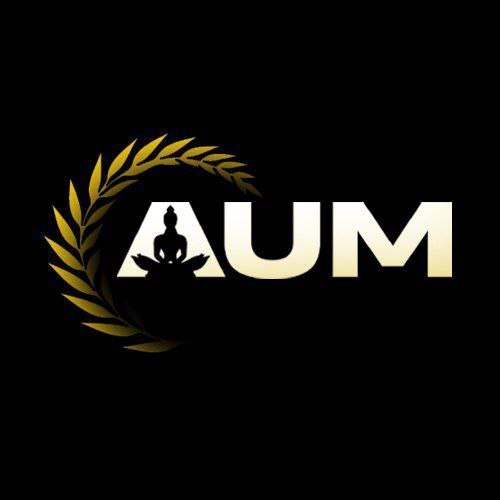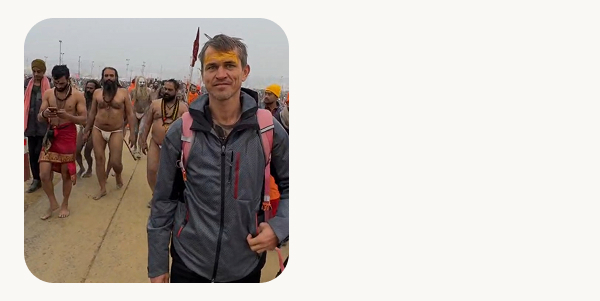
Foreigners at the Kumbh Mela festival are more the exception than the rule. The sacred significance of the event is too profound to accommodate casual visitors. Our attention was drawn to one of the foreign pilgrims—a tall, fair-skinned man performing the ritual bathing in the Ganges alongside Indians. The story he shared after the festival is as astonishing as everything else that happens during the great Kumbh Mela.
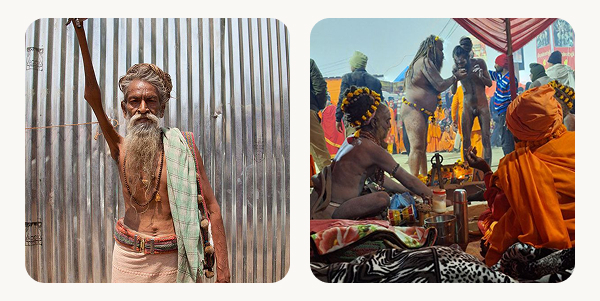
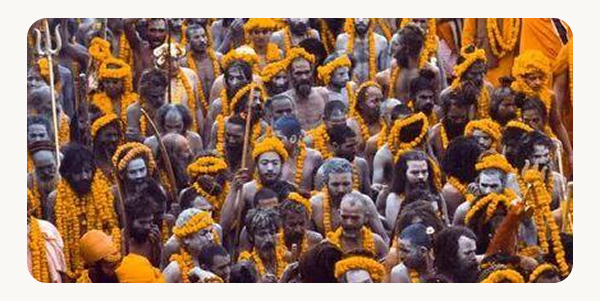
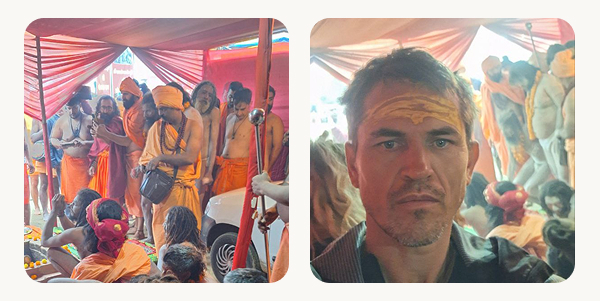
Vyacheslav Vasilyuk is a successful businessman in Russia. He is deeply involved in yoga and has founded a retreat center in his homeland where anyone can immerse themselves in Indian culture. After attending the Kumbh Mela, Vyacheslav experienced a true quantum leap in his life—he conceived a large-scale project that could improve the lives of millions. The Russian launched the world’s first memecoin backed by agricultural products. The goal of the AUM project is to promote pure farming without chemicals.
— Vyacheslav, it’s always interesting to learn what draws foreigners to Indian culture. After all, your mentality is completely different. How did you transition from being a casual enthusiast to a true yogi and follower of Buddhism?
My journey took many years. I first visited North Goa in 2006. I was very young, with different interests. Yet, even then, India stood out among my many travels. I lived in Moscow, immersed in work and family life—my focus shifted to the material side of things. At the same time, I felt a pull toward the land and decided to become a farmer, moving from the capital to the countryside. Everything seemed to be going well—business was thriving, money was sufficient, children were growing up. What more could one need for happiness? It turned out that health was missing. Suddenly, at the peak of my life, my body failed. I visited numerous doctors, but none could pinpoint the cause or help.
I was only 33 years old. It’s such a symbolic age, as if you’re standing at a crossroads—either change or face the end… I went against conventional medicine and chose a radical path—I became a raw foodist. About a year of this diet drastically improved my well-being and health. I realized I was ready to move forward, both literally and figuratively, and that same year I decided to undertake the kora around Mount Kailash. Perhaps this predetermined my future path, as the kora symbolizes the beginning of a new life, which I desperately needed.
— What an incredible story. It’s as if an unseen hand was guiding you.
After Tibet, events began to unfold even faster. The more I interacted with Buddhists, the more I was drawn to Buddhist philosophy—its system of self-discovery, its reverence for all living things, the concept of karma. During that period, I had an immense spiritual thirst, and Buddhism provided answers to many questions that had seemed unresolvable. That same winter, I moved to India, where I coincidentally—or not?—ended up in a Buddhist monastery. Two weeks there literally divided my life into before and after. Many Russians were in the monastery, and they all said I had incredible karma. I understood the words but not yet their meaning. Up to that point, I had been a person of a different world. In the monastery, I was given refuge, and thus I became a Buddhist and received my spiritual name—Pavan Chander Singh.
— What changed in your life after embracing Buddhism?
Changes were predicted for me back in the monastery, and they didn’t take long to manifest. A few days later, I met a real Sadhvi, who became my spiritual guide and yoga teacher.
I didn’t recognise myself. It was as if I had awakened in a different world, in a different body. A powerful energy came over me—I woke up at 4 a.m., meditated, chanted mantras, practiced yoga—doing everything Sadhvi recommended for the body and spirit.
Since then, India has become my second home. From spring to autumn, I was in Russia, working in agriculture, and in winter, when it’s cold and the land rests, I came here with my family. I continued my yoga practice, visited power places, went to Varanasi, performed the ritual Parikrama around Arunachala, and lived in Haridwar, Hampi, Gokarna, and Devprayag. By the way, something unusual happened to me there. A passing Hindu showed me a special spot for meditation. I decided to try it, sat on that stone, and… literally entered an unknown dimension. It’s hard to describe in words—something between flight and the fear of the unknown. A very intense experience.
— For a foreigner, your immersion in our culture is remarkably deep and detailed. It’s clear that your interest goes far beyond casual curiosity, as is often the case with tourists. It seems you’re not planning to stop?
I’ll keep going as long as the path appears beneath my feet. And it’s an incredible path. In 2022, it led me to Nepal, around the Annapurna Circuit. It was very challenging, both physically and emotionally, with intense austerities. We walked for two weeks, 160 km through the high mountains.
— It seems this same path brought you to the great Kumbh Mela festival this year?
You know, yes… As soon as I heard about this event, I immediately knew I had to go. I offered to bring my family, but no one agreed, so I went alone. I was told that Kumbh Mela is a sacred festival, an opportunity to accelerate spiritual purification through bathing in the holy waters. So, I ended up here—whether by chance or not…
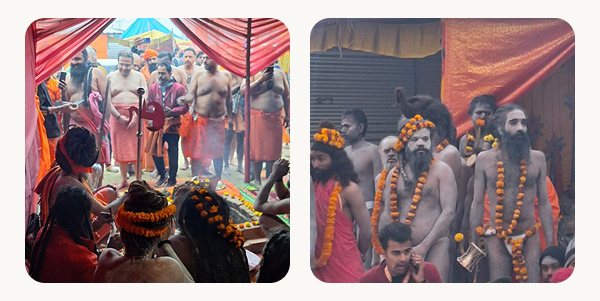
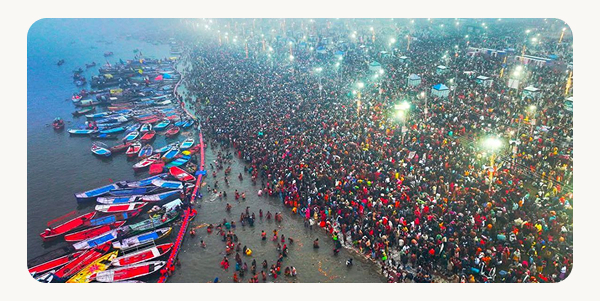
— For Indians, bathing during these days is sacred. Hundreds of thousands of pilgrims gather from all over the country at the festival sites, but there usually aren’t many foreigners…
To be honest, I didn’t fully understand what was happening with my mind. I just felt that I absolutely had to be here and now… As for the numbers—yes, I heard about 400 million people, and it felt like it.
When I performed the ritual bathing, so many people approached me, even television crews. I was the only fair-skinned person among the Indians, and apparently, that drew attention. Everyone kept saying that I had purified not only my karma but also that of all my loved ones. For me, it was an incredibly deep emotional shock. I felt as if I had been anticipating something, but I couldn’t yet understand what.
— This is a very significant spiritual event. There are no accidental people at Kumbh Mela. Do you feel its influence on you now?
More than ever, because just a few days after returning to Moscow, another event occurred—one that, it seems, I had been preparing for over the past few years without even realizing it. Some higher plan.
I’m a farmer. I grow wheat—essentially, bread. In our country, there’s a lot of land, and we produce a huge amount of grain both for ourselves and for export. But there’s a major problem—large agricultural enterprises actively use fertilizers and chemical additives to increase yields. This is a slow-motion disaster.
I know firsthand the damage fertilizers cause—how they kill the soil, plants, disrupt ecosystems, and poison the air and water. After fertilizers, the soil is dead. Unfortunately, chemicals are used almost everywhere, and we’re reaping the consequences.
The second issue, a direct result of the first, is cancer. Numerous medical studies confirm that cancer rates are higher in regions with large-scale agricultural production. Cancer is getting younger… People in their 40s getting sick is now the norm, not the exception.
The third issue isn’t obvious to most, but I’ll explain—over 50% of all wheat grown in Russia goes to feed… pigs. And pork not only provides little nutritional benefit but is also harmful to human health. So, 60−70% of the land is used to grow grain to feed pigs, so that people can eat pork and feel worse.
It turns out that chemicals are poured onto the fields, making everyone sick, to grow more grain, which is used to feed pigs, which also makes everyone sick.
It’s like a real food genocide.
I have 1,000 hectares of land in Russia, and I strictly avoid using chemicals. We remove weeds mechanically. And—this is important!—it doesn’t affect the yield at all. I’m speaking as a practical farmer.
— The situation is complex and global. Do you have an idea of how to fix it?
The idea came to me right after Kumbh Mela, and it was implemented lightning-fast. I created a cryptocurrency to support pure farming—the memecoin AUM YogaFerma.
I wasn’t into cryptocurrency before this. I overheard my teenage son and his friend discussing a memecoin that had recently exploded in the crypto world, and then Trump’s memecoin appeared…
And it hit me—cryptocurrency has immense potential for building communities! And the value of a community isn’t just in capitalization—I'm speaking as a businessman. A community united by a common idea is a powerful force. What I can’t do alone, we can do together. I’m talking about the possibility of influencing the principles of agriculture and, as a result, the quality of life for every one of us. With a memecoin, we can attract a huge number of people to conscious attitudes toward the land and the environment, and as a bonus—they can even earn money. So, I thought about it, pressed a button—and everything started spinning…
— The idea is truly worthy. How do you see it developing?
Right now, my head is spinning—there are so many proposals and ideas, and planting season is just around the corner. Fortunately, I’ve managed to assemble a strong team, and I’m incredibly grateful to them. I couldn’t have handled this alone, and I’ve barely slept since the launch.
Everything has been moving incredibly fast, starting from the launch itself. I didn’t expect such an effect—almost immediately, the capitalization reached over $ 500,000. I was in shock; I didn’t anticipate such a whirlwind of events and the influx of people. Now, the AUM YogaFerma community keeps growing, and not just in Russia.
Honestly, AUM isn’t a memecoin in the classic sense. That’s what people explained to me later. As someone initially far from the crypto world, I launched the coin in the simplest way. So, by name, AUM is a memecoin, but in essence, it’s a community coin—a coin for building a community that carries meaning and specific benefits. In my case, the goal is to draw attention to agriculture, to make people think about the impact of chemicals on health and the environment.
As for development—we're currently exploring several models for integrating cryptocurrency into the real economy, particularly in the agricultural sector. Since this is a fundamentally new and highly promising direction, we need to carefully work out all aspects—protecting AUM coin holders from price drops, technical interaction protocols, and clarifying gray areas in legislation to ensure complete transparency.
There are many prospects—for example, the coins can be used to finance businesses, which increases motivation for crypto holders as they receive dividends without needing to sell their coins.
The project has enormous potential, literally unlimited. We saw this immediately after the launch. At its peak, the growth reached 2,500%. Subsequently, the chart stabilized and began to grow organically, which indicates society’s interest in this fundamentally new cryptocurrency model.
Right now, the key task is to attract people who are genuinely interested in this idea and share my principles. Fortunately, the community is already forming—those who wanted quick money have already taken it and left, while those who understood the meaning and are ready to stay and develop the project remain. This is incredibly valuable. Everyone benefits from this, on all levels of understanding.
— Vyacheslav, you’re a yogi with serious practice. Tell me, how does the spiritual path of yoga align with cryptocurrency? Are there no contradictions?
That’s a good question. I’ve already been asked this in Russia, with a hint of sarcasm. Like, these are incompatible concepts. But for me, yoga isn’t just a picture of someone sitting in the lotus position. Yoga as mindfulness manifests in all areas of life, and business is no exception. Yoga doesn’t encourage speculation. Karma comes back—if I deceive someone now and profit from them, the same will happen to me. I’ve lived by the principles of yoga for many years, and it works exactly like that.
That’s why the project is completely transparent—I'm open to communication, happy to connect with like-minded people, and I don’t hide my name or business. The AUM memecoin is backed by the real economy—grain. And this is a basic human need. My agricultural business has been, is, and will continue to operate, no matter what. People will always need food.
Returning to yoga—I'm at peace with my karma. There’s a goal behind this project, and the profits from it also go toward specific actions. So, those who buy the coin are primarily expressing support for higher goals—conscious and eco-friendly attitudes toward the land and the environment. And the bonus of earning karma and money is an added benefit.
I’m fully aware that this project is also a matter of reputation. I’m completely open to the community that trusts me and the coin, and I hope for reciprocity.

— Your openness is disarming. The project deserves respect, and I wish you success on your path!
Thank you for the opportunity to speak to such a wide audience. The community is growing with international participants, and each new member strengthens my belief that together, we can make our land cleaner. Friends, it’s doubly valuable for me to see Indians in the AUM community, because it’s thanks to you, your open hearts, that I am who I am today. I look forward to seeing each of you in the online project and in Russia, at our YogaFerma retreat center.
